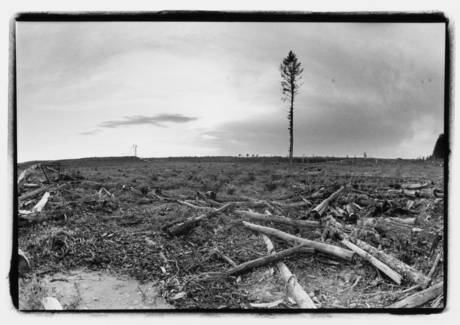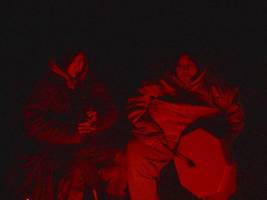Grassy Narrows Rights Learn more about the provincial, national and international rights that have been afforded to Grassy' Narrows.

Overview
 The people of Grassy Narrows are the direct descendents of the Salteaux tribe of the Ojibway Nation. Long before any Europeans knew of their existence the people of Grassy Narrows had a fully functional society with their own economic, political, legal and spiritual systems. They were mutually recognized by other indigenous nations, and conducted trade and had relations with their neighbors. They used the land and occupied it. Arising from these facts, the people of Grassy Narrows, as indigenous or aboriginal people, have unique, inherent, and enduring rights to the land, as well as basic human, legal and ethical rights.
The people of Grassy Narrows are the direct descendents of the Salteaux tribe of the Ojibway Nation. Long before any Europeans knew of their existence the people of Grassy Narrows had a fully functional society with their own economic, political, legal and spiritual systems. They were mutually recognized by other indigenous nations, and conducted trade and had relations with their neighbors. They used the land and occupied it. Arising from these facts, the people of Grassy Narrows, as indigenous or aboriginal people, have unique, inherent, and enduring rights to the land, as well as basic human, legal and ethical rights.
Yet, although Grassy Narrows has inherent, historical and legal rights which have been repeatedly upheld in the courts and on an international field by the United Nations, their rights are being blatantly violated.
Through a long process of deception and force by the Canadian Government the community has been dispossessed of their lands by Provincial legislation. The Ontario Government currently grants multinational corporations like Weyerhaeuser the rights to clear-cut log Grassy Narrows' area, stripping intact forest regions of Grassy Narrows Territory into chunks of 20,000 barren acres or more.
Historical and Treaty Rights
 Officially aboriginal or indigenous rights in Canada were recognized by the British Royal Proclamation of 1763 which states that “Nations or Tribes of Indians with whom We are connected, and who live under our Protection, should not be molested or disturbed in the Possession of such Parts of Our Dominions and Territories as, not having been ceded to or purchased by Us, are reserved to them, or any of them, as their Hunting Grounds.” Although some the early traders were fairly respectful, the rapidly encroaching settlers mostly did not respect this proclamation.
Officially aboriginal or indigenous rights in Canada were recognized by the British Royal Proclamation of 1763 which states that “Nations or Tribes of Indians with whom We are connected, and who live under our Protection, should not be molested or disturbed in the Possession of such Parts of Our Dominions and Territories as, not having been ceded to or purchased by Us, are reserved to them, or any of them, as their Hunting Grounds.” Although some the early traders were fairly respectful, the rapidly encroaching settlers mostly did not respect this proclamation.
On October 3rd, 1873 Treaty 3 was signed between the Crown and the Chiefs of the Salteaux Tribe of the Ojibway Indians. The Grassy Narrows community members are descendents of this Nation and are therefore entitled to exercise the rights established in this treaty, including the “right to pursue their avocations (of hunting and fishing) throughout the tract.” This is commonly understood to include the right to trap animals for food, and to exercise these rights both for sustenance and commercial purposes. Treaty 3 has also been largely violated by the governments of Canada and Ontario.
Supreme Court Decisions of Canada
Grassy Narrows' historical and legal rights are respectively recognized and affirmed under section 25 of the Canadian Charter of Rights and Freedoms, and section 35(1) of the Constitution Act, 1982.
The Supreme Court of Canada has repeatedly upheld historical indigenous or aboriginal rights, and clarified that in any development with potential impact on treaty rights the Crown has a duty to meaningfully consult and accommodate the affected First Nation, at a minimum. This consultation must be undertaken “in good faith, and with the intention of substantially addressing the concerns of the Aboriginal peoples whose lands are at issue.” The dealings of the Crown must further be considered honourable. In some cases of strong claims and high impacts, the courts have acknowledged that consent must be obtained. Learn more about specific Supreme Court of Canada rulings regarding indigenous rights.
United Nations
The Canadian governments’ refusal to respect its treaty with Grassy Narrows and its decision to continue to allow provincially mandated corporations, such as Weyerhaeuser, to decimate Grassy Narrows’ land without the community’s consent is in direct violation of basic human rights as articulated by the Committee for the Elimination of Racial Discrimination in its interpretation of the International Convention on the Elimination of All Forms of Racial Discrimination – an established and binding human rights treaty:
The Committee especially calls upon States parties to recognize and protect the rights of Indigenous peoples to own, develop, control and use their communal lands, territories and resources and, where they have been deprived of their lands and territories traditionally owned or otherwise inhabited or used without their free and informed consent, to take steps to return those lands and territories.
In addition, the behavior of the Canadian Government is also in violation of the UN Declaration on the Rights of Indigenous Peoples, which asserts that “Indigenous peoples have the right to own, use, develop and control the lands, territories and resources that they possess by reason of traditional ownership or other traditional occupation or use, as well as those which they have otherwise acquired.”
The UN Declaration on the Rights of Indigenous Peoples was passed at the UN General Assembly and therefor applies to all countries. Canada is one of only four countries who voted against the declaration. Of the three other countries, Australia has since endorsed, and the U.S. and New Zealand have committed to reconsidering their position.




